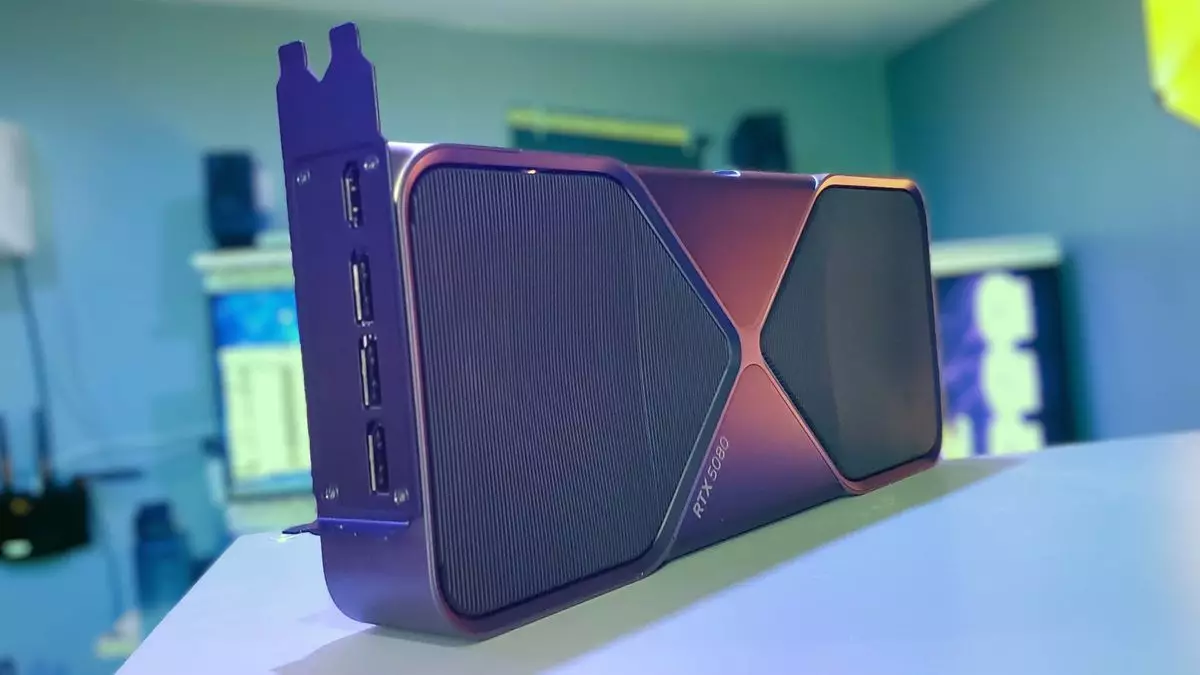The world of gaming technology is continuously evolving, and Nvidia’s latest offering—the RTX 50-series graphics cards—has certainly stirred up a multitude of responses from tech enthusiasts and gamers alike. Described in a variety of ways—from “the most powerful graphics core” to “strangely unexciting”—the launch has attracted considerable attention. The initial reaction among consumers reveals both excitement and skepticism, creating a mixed bag of impressions from an apparent blockbuster release.
At the crux of Nvidia’s launch is the undeniable demand demonstrated by retailers. Newegg, one of the foremost platforms for tech enthusiasts, reported an impressive sell-out of its allocated stock. The data shared indicates that the RTX 50-series cards vanished within moments, with most inventory claimed within a noteworthy five-minute window. Yet, the entire stock took approximately 20 minutes to deplete, a timeline that suggests strong consumer interest but raises a question of how the inventory levels compared to past Nvidia launches.
This demand wasn’t only for the cards themselves; it also extended to prebuilt gaming PCs that incorporated Nvidia’s cutting-edge technology. Retailers like Newegg offered a plethora of systems from multiple brands, blending the appeal of preassembled convenience with the allure of high-performance gaming. The combination of various offerings and escalating online traffic—a surge reported to be as much as ten times the usual volume—underscores a growing enthusiasm for these new GPUs.
Interestingly, the RTX 5080 emerged as the star attraction among the newly released cards, dominating interest compared to its more elite counterpart, the RTX 5090. This disparity begs an analysis of consumer behavior: the appeal of the RTX 5080 can be attributed to not only its competitive pricing, sitting at half the cost of its sibling, but also its alignment with more mainstream gaming needs. Gamers often seek value, and at a more moderate price point, the 5080 offers substantial performance without the financial burden associated with high-end graphics technology.
However, discussing the excitement surrounding the RTX 5080 leads to a broader conversation about the nature of innovations in the graphics card market. While the performance specifications may not be revolutionary relative to Nvidia’s previous offerings, the attention garnered is indicative of a unique market dynamic where even incremental upgrades can spur extensive demand. Thus, while the 5090 may be more powerful, the 5080’s balanced offering appeals more to a larger audience.
A Call for Future Availability
Challenges inevitably arise during such high-profile launches, most notably regarding stock availability. Jim Tseng, Newegg’s VP of Product Management, acknowledged the overwhelming response to the RTX 50 series, vowing a commitment to ensuring restocks for eager buyers. This pledge is crucial in an industry plagued by supply chain challenges and fluctuating demand patterns.
Expectations of demand necessitate not only efficient fulfillment strategies but also keeping consumers informed about future availability. A second wave of RTX 5080 inventory demonstrated Newegg’s intent to supply in direct response to initial sell-out pressures. This proactive approach enables retailers to maintain engagement with their customer bases and allows consumers to remain hopeful about acquiring the latest digital technology.
As Nvidia pushes the envelope of gaming performance, the strategy behind its RTX 50-series launch may signal a pivotal moment in graphics technology. While initial reactions showcase both enthusiasm and concern over pricing and performance, the demand underscores a critical truth: gamers are keenly invested in advancements, no matter how nuanced. The challenge will remain ensuring accessibility in a fast-moving tech landscape, where impressive specifications must also translate into viable consumer options.
The RTX 50-series release embodies the tensions and triumphs of the gaming hardware industry—innovation, consumer desire, and market dynamics all intersecting in a complex dance. As the dust settles from this launch, the implications of Nvidia’s approach will undoubtedly resonate throughout the gaming community for years to come.


Leave a Reply